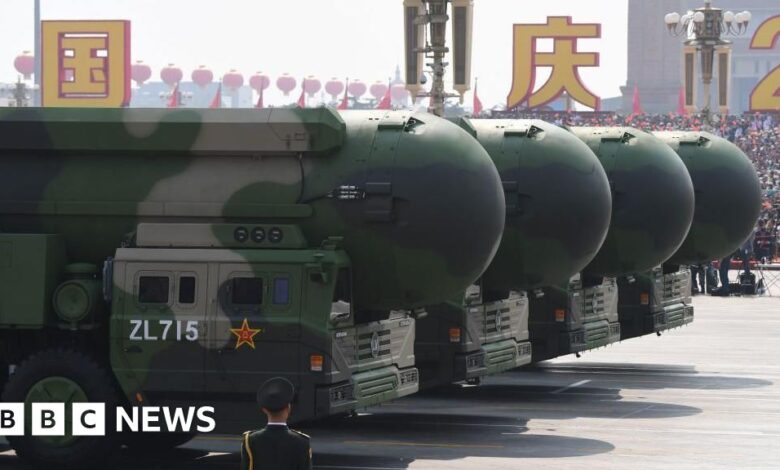China tests ICBM for first time in decades

China claims to have successfully launched an intercontinental ballistic missile (ICBM) carrying a dummy warhead into the Pacific Ocean.
Beijing’s Defense Ministry said the ICMB was launched at 08:44 local time (04:44 GMT) on Wednesday and “fell into the planned sea area”, adding that the test launch was “routine” and part of the country’s “annual training”.
The type of missile and its flight path remain unclear, but Chinese state media said Beijing had “informed relevant countries in advance”.
Analysts said Beijing’s description of the test as “routine” was surprising given that the last such test took place in 1980.
China’s nuclear weapons tests typically take place domestically, and it has previously tested firing an ICBM westward into the Taklamakan Desert in the Xinjiang region.
So this is believed to be the first time since 1980 that the country has launched an intercontinental ballistic missile into international waters.
“Unless I missed something, I think this is essentially the first time this has happened — and been announced as such — in a long time,” Ankit Panda, a nuclear weapons expert at the Carnegie Endowment for International Peace, wrote on X.
Beijing’s description of the test as “routine” and “annual” was odd, he added, “because they don’t do this routinely or annually.”
Japan’s Defense Ministry said as of early Wednesday afternoon, there had been no damage to any of its vessels.
“We will continue to collect and analyze information on Chinese military activities and will take all possible precautions while being vigilant and monitoring,” the ministry said, according to Japanese broadcaster NHK.
China’s most recent test – in May 1980 – saw the ICBM fly 9,070km and land in the Pacific Ocean. That test involved 18 Chinese naval vessels and is still considered one of China’s largest naval missions.
“Timing is everything,” Drew Thompson, a visiting fellow at the Lee Kuan Yew School of Public Policy in Singapore, wrote on X.
“[China’s] The statement said the launch was not aimed at any country, but there are high levels of tension between China and Japan, the Philippines, and of course ongoing tensions with Taiwan.”
“The launch is a strong signal intended to intimidate people,” he added.
John Ridge, a US-based defence analyst, said China may have conducted the test as a form of “posturing or signalling to the United States”.
While relations between Beijing and Washington have improved over the past year, China’s increasingly assertive posture in the region remains a point of contention.
Tensions have been rising between China and PhilippinesIpine tree because their ships have collided several times in disputed waters. Last month, Japan dispatches fighter jets after accusing a Chinese spy plane of violating its airspace, a move it called “completely unacceptable”.
Beijing’s claims of Taiwan’s autonomy are another source of tension.
Taiwan’s defense ministry said earlier on Wednesday that China had conducted “intensive” missile launches and other exercises recently. In the same statement, the ministry said it had spotted 23 Chinese military aircraft operating around Taiwan on “long-range missions.”
Beijing regularly sends warships and aircraft into Taiwanese waters and airspace in what analysts call “gray zone warfare” tactics aimed at normalizing incursions.
In July this year, China suspended nuclear arms control talks with Washington in retaliation. US continues to sell arms to Taiwan.
Last year, China replace two leaders of the People’s Liberation Army Rocket Force – the elite unit that manages the nuclear arsenal – for corruption allegations.
In a report released last year, the Pentagon estimated that China has more than 500 active nuclear warheads in its arsenal, including about 350 intercontinental ballistic missiles (ICBMs).
The report also predicts that China will have more than 1,000 warheads by 2030. However, that number is just a fraction of the more than 5,000 warheads that the United States and Russia both claim to possess.




